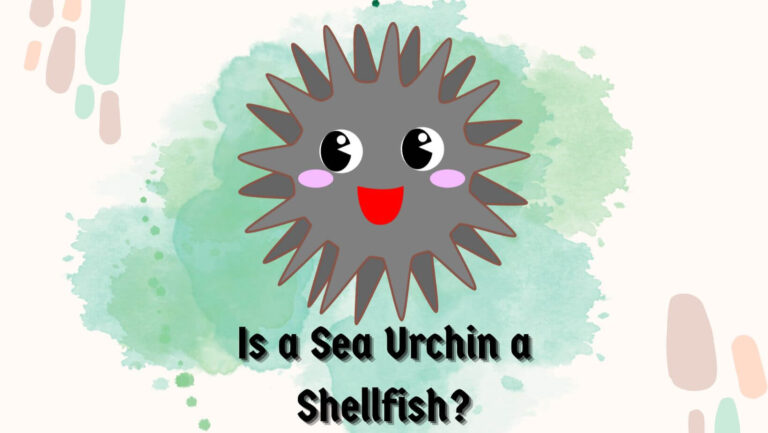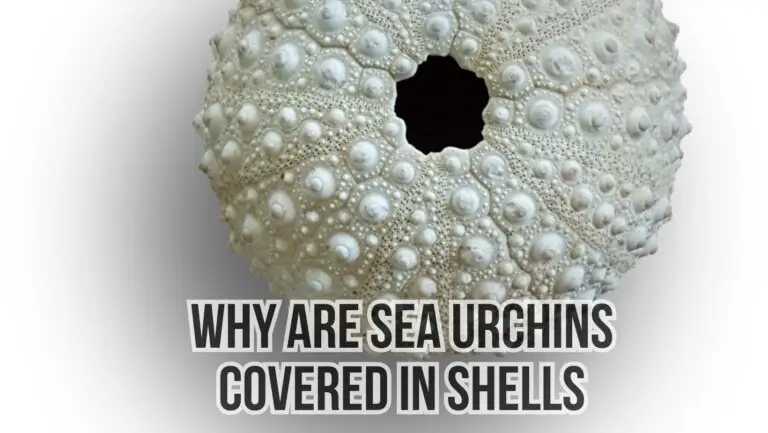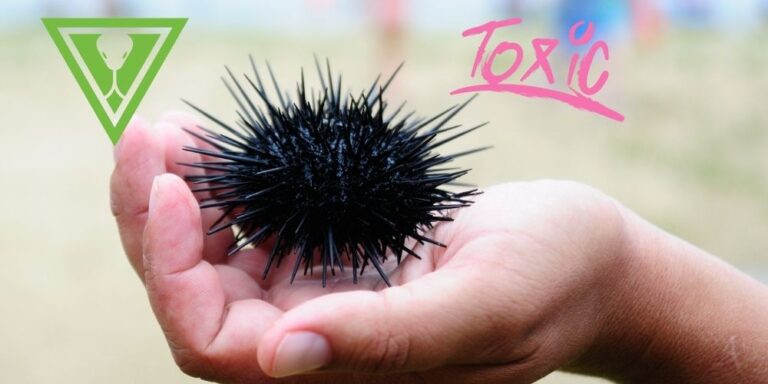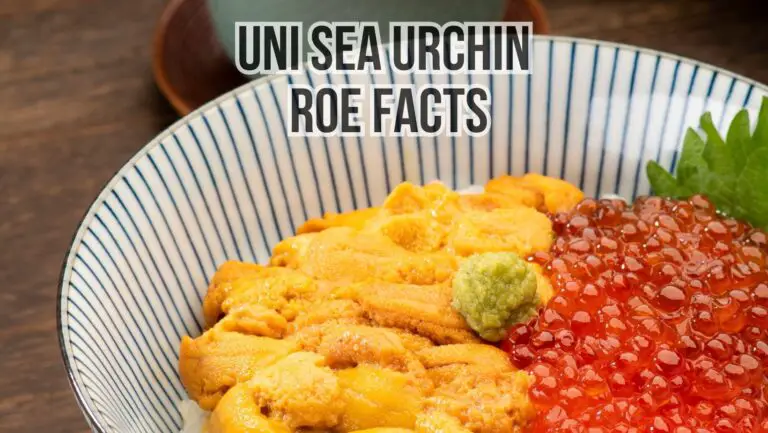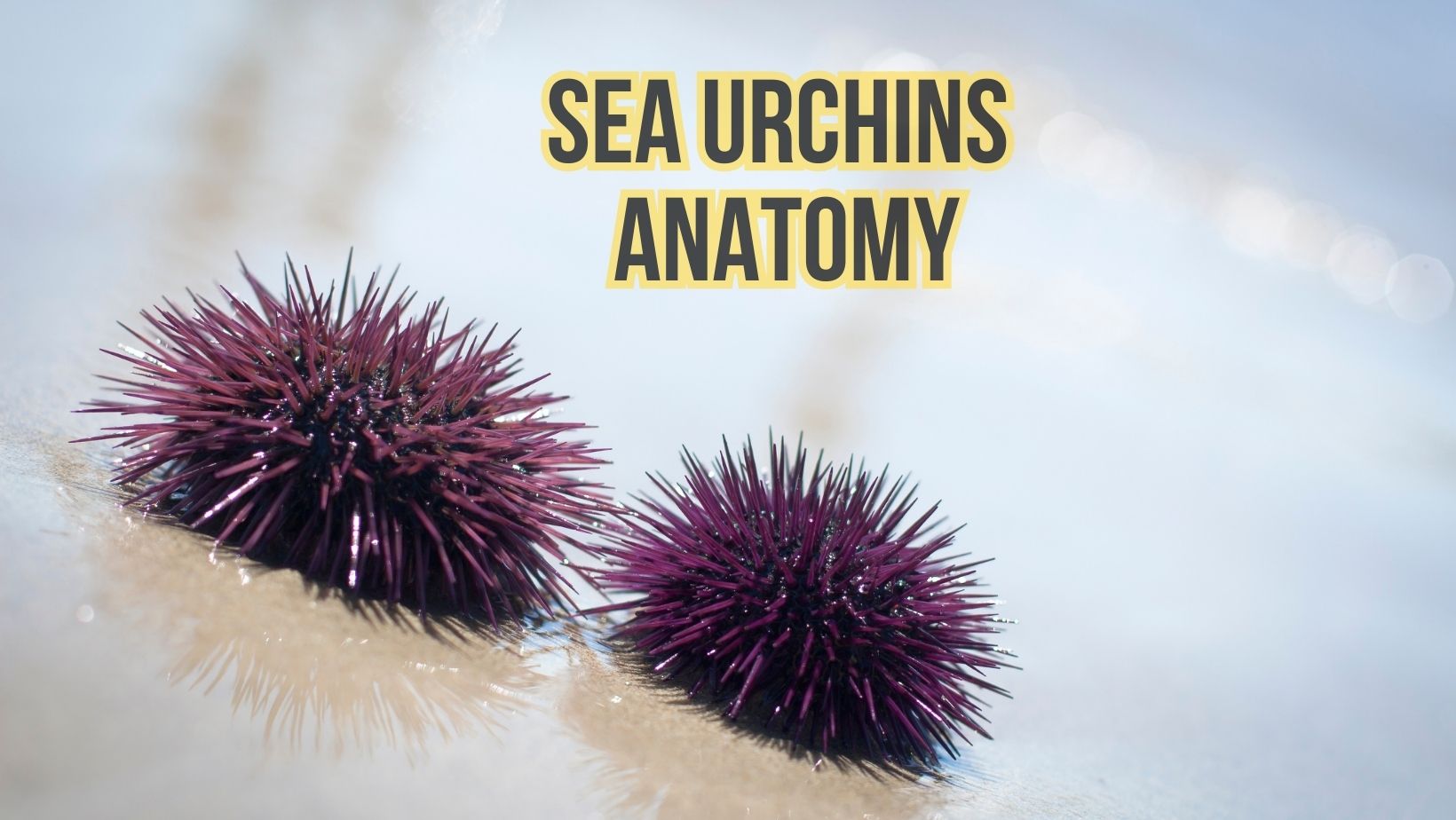
Scientific Name: Sea urchins belong to the class Echinoidea.
Sea Urchin Phylum: Sea urchins belong to the phylum Echinodermata. This phylum includes other marine animals such as starfish, sea cucumbers, brittle stars, and crinoids.
Sea Urchin Classification: Sea urchins are classified as follows:
- Kingdom: Animalia (Animals)
- Phylum: Echinodermata (Echinoderms)
- Class: Echinoidea (Sea urchins and sand dollars)
Sea Urchin Order: The class Echinoidea is further divided into several orders, including the following:
- Clypeasteroida: Sand dollars, flattened sea urchins with a distinct disk shape.
- Echinoida: Regular sea urchins with spherical or slightly flattened bodies.
- Temnopleuroida: Irregular sea urchins with a more elongated or oval-shaped body.
These orders further contain various families, genera, and species, comprising the diverse array of sea urchin species found worldwide.
Sea Urchin Characteristics: Sea urchins have a spherical or globular body shape covered in spines. They possess a hard, calcareous outer shell called a test, which provides protection. Sea urchins have a water vascular system that aids in locomotion, feeding, and respiration. They are typically herbivorous or omnivorous, feeding on algae, kelp, and other plant material. Sea urchins have a unique chewing structure called Aristotle’s lantern, which helps them scrape and grind food. They reproduce sexually, with separate male and female individuals.
Sea Urchin Parts And Function
Sea urchins have various parts that serve specific functions in their anatomy. Let’s explore the key parts of a sea urchin and their functions:
- Test: The test is the hard outer shell of a sea urchin. It provides protection and support for the internal organs. The test is composed of fused plates or ossicles that form a rigid structure.
- Spines: Sea urchins have long spines protruding from their test. These spines serve multiple purposes. They act as a defense mechanism against predators, provide stability and balance, aid in locomotion by pushing against surfaces, and help with burying into the substrate.
- Tube Feet: Tube feet are small, flexible appendages that extend from the sea urchin’s body. They have suction cups at their tips, allowing the sea urchin to grip surfaces and move. Tube feet are used for locomotion, attachment to substrates, and capturing food particles.
- Mouth and Aristotle’s Lantern: Sea urchins have a mouth located on the underside of their body. Surrounding the mouth is a complex chewing apparatus called Aristotle’s lantern. It consists of five hard, tooth-like structures that can move in a coordinated manner. The mouth and Aristotle’s lantern are used to scrape, grind, and break down food.
- Digestive System: Sea urchins have a complete digestive system. After ingestion through the mouth, the food passes through the esophagus into the stomach. The stomach further breaks down the food, and nutrients are absorbed in the intestine. Waste is eliminated through the anus, located on the top surface of the sea urchin’s body.
- Water Vascular System: Sea urchins possess a unique water vascular system. It consists of a network of fluid-filled canals connected to tube feet. The water vascular system allows for the extension and retraction of tube feet, regulates internal pressure, and facilitates respiration and waste elimination.
- Gonads: Sea urchins have reproductive organs called gonads. They produce eggs or sperm for reproduction. The gonads can vary in color and are often harvested as a culinary delicacy, known as sea urchin roe or uni.
- Pedicellariae: Pedicellariae are tiny pincer-like structures found on the body of sea urchins. They are used for cleaning and defense purposes. Pedicellariae help remove debris, algae, and small organisms from the sea urchin’s body surface.
Each part of the sea urchin’s anatomy plays a crucial role in its survival, locomotion, feeding, and reproduction. The combination of these specialized structures allows sea urchins to adapt and thrive in various marine environments.
Internal Anatomy Of Sea Urchin: Do Sea Urchins Have Organs?
Sea urchins do have organs, although their internal anatomy differs from that of many vertebrates. While their organ systems are simpler compared to mammals or birds, sea urchins possess various organs that perform essential functions. Let’s explore some of the key organs found in sea urchins:
The internal anatomy of a sea urchin comprises several organ systems that enable its vital functions. Let’s explore the internal structures and their roles:
- Digestive System:
- Mouth: Located on the underside of the sea urchin, the mouth is the entry point for food.
- Esophagus: It connects the mouth to the stomach and allows food to pass through.
- Stomach: The stomach is responsible for breaking down food through chemical and mechanical digestion.
- Intestine: After digestion in the stomach, the intestine absorbs nutrients from the broken-down food.
- Anus: Waste materials are eliminated through the anus, which is located on the top surface of the sea urchin.
- Water Vascular System:
- Madreporite: The madreporite is a sieve-like structure through which seawater enters the water vascular system.
- Ring Canal: The ring canal encircles the mouth and acts as a central distribution point for the water vascular system.
- Radial Canals: The radial canals branch out from the ring canal and extend towards each tube foot.
- Tube Feet: The tube feet are small, fluid-filled structures that extend from the radial canals. They aid in locomotion, feeding, and respiration.
- Reproductive System:
- Gonads: Sea urchins have separate male and female gonads. These reproductive organs produce eggs or sperm.
- Gonoducts: The gonoducts are ducts that transport eggs or sperm from the gonads to the exterior for reproduction.
- Nervous System:
- Nerve Ring: A nerve ring surrounds the mouth, connecting various nerve fibers and ganglia.
- Nerve Cords: From the nerve ring, two nerve cords extend along the length of the body, running parallel to the digestive system. These cords control sensory and motor functions.
- Respiratory System:
- Tube Feet: The tube feet play a role in gas exchange, allowing the sea urchin to obtain oxygen and release carbon dioxide.
- Circulatory System:
- Sea urchins lack a dedicated circulatory system with blood vessels. Instead, nutrients and waste are transported through the coelomic fluid that fills the body cavity.
- Skeleton and Muscles:
- The internal skeleton, known as the endoskeleton, provides support and protection for the internal organs.
- Muscles, including longitudinal and circular muscles, allow the sea urchin to control movement and tube foot extension.
Understanding the internal anatomy of sea urchins helps in comprehending their physiological processes and adaptations to their marine environment. The intricate interplay of these organ systems ensures the proper functioning and survival of these remarkable creatures.
Sea Urchin Physical Characteristics
Sea urchins have distinct physical characteristics that are key to their identification and survival in the marine environment. Here are some notable physical features of sea urchins:
- Shape: Sea urchins have a rounded or globular shape. Their bodies are typically symmetrical and spherical, although some species may have a slightly elongated or flattened form.
- Test: The outer skeleton of a sea urchin is called the test. It is made up of fused plates or ossicles that fit together like a puzzle, forming a hard and protective shell. The test can vary in color, texture, and pattern among different species.
- Spines: Sea urchins are covered in long, pointed spines that extend outward from their tests. These spines serve as a defense mechanism against predators, protecting the sea urchin from potential threats. The spines can be sharp or blunt, and their size and arrangement vary among species.
- Ambulacra: Ambulacra are rows of tube feet that extend between the spines. These specialized structures aid in locomotion, attachment to surfaces, and capturing food particles. The number and arrangement of ambulacra vary among sea urchin species.
- Mouth and Aristotle’s Lantern: Sea urchins have a mouth located on the underside of their body. Surrounding the mouth is a complex chewing apparatus called Aristotle’s lantern. It consists of five interlocking tooth-like structures that can move in a coordinated manner, enabling sea urchins to scrape and grind food.
- Coloration: The coloration of sea urchins can vary widely depending on the species. They may exhibit colors ranging from shades of purple, red, and green to more muted tones or even transparent. Some species may have vibrant patterns or markings on their tests.
- Size: Sea urchins come in various sizes, ranging from just a few centimeters to several inches in diameter. The size of a sea urchin is influenced by its species, age, and environmental factors.
These physical characteristics contribute to the survival, protection, and adaptation of sea urchins in their marine habitats. Each species has its unique combination of features, allowing them to fulfill their ecological roles and thrive in diverse marine environments.
Sea Urchin Fossils:
Sea urchins have a rich fossil record, with some species dating back hundreds of millions of years. Fossils of sea urchins are primarily composed of the mineralized skeletal elements, such as tests and spines, which are more likely to be preserved in the fossilization process. These fossils provide valuable insights into the evolutionary history and diversity of sea urchins and their ancestors.
Fossilized sea urchins can be found in various types of sedimentary rocks, such as limestone and shale. Paleontologists study these fossils to understand the evolutionary relationships between different sea urchin species, as well as their ecological roles and adaptations over time.
By examining sea urchin fossils, scientists can track changes in morphology, analyze patterns of biodiversity, and reconstruct ancient marine environments. Fossil sea urchins contribute to our understanding of the Earth’s history and the evolution of marine life throughout geological time.

